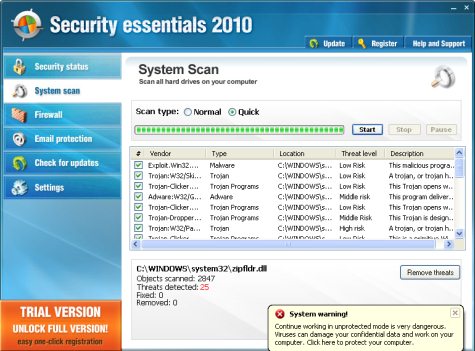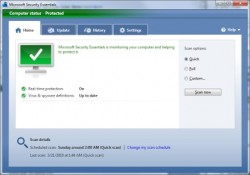
A growing security problem involves a type of malware that installs itself and begins to imitate a legitimate security program. These rogue security programs often confuse the average PC user, and can be difficult to remove.
The problem begins when the fake program claims to ‘detect’ problems.
The warnings are designed to produce panic, using phrases like ‘dangerous threats’ and ‘damage to your PC’. The goal, of course, is to convince the user to give up a credit card number to remove any threats.
Security firms estimate that these companies rake in tens of millions of dollars per month, and it is still very much increasing (see this report from Information Week to get a better idea).
A common tactic is to imitate a popular security product, like the Security Essentials clone pictured above. Most rogue security software also generates messages and pop-ups that appear to originate from the Windows operating system itself.

Thousands of variants are found each year, so keeping track of them is difficult. This also explains why legitimate security software is often ineffective at detecting these threats: With a budget this large, these fake spyware companies could churn out new versions every day.
The bad news doesn’t end there. This kind of bad software is notably difficult to remove. They generally block access to security related websites, and even block good security programs from running. So once a PC is infected, a call to the computer technician is usually necessary.
The good news is that avoiding this type of software is easy if you follow computer safety basics, like avoiding unknown free downloads, keeping your PC up-to-date and keeping track of the other people that use your computer.
